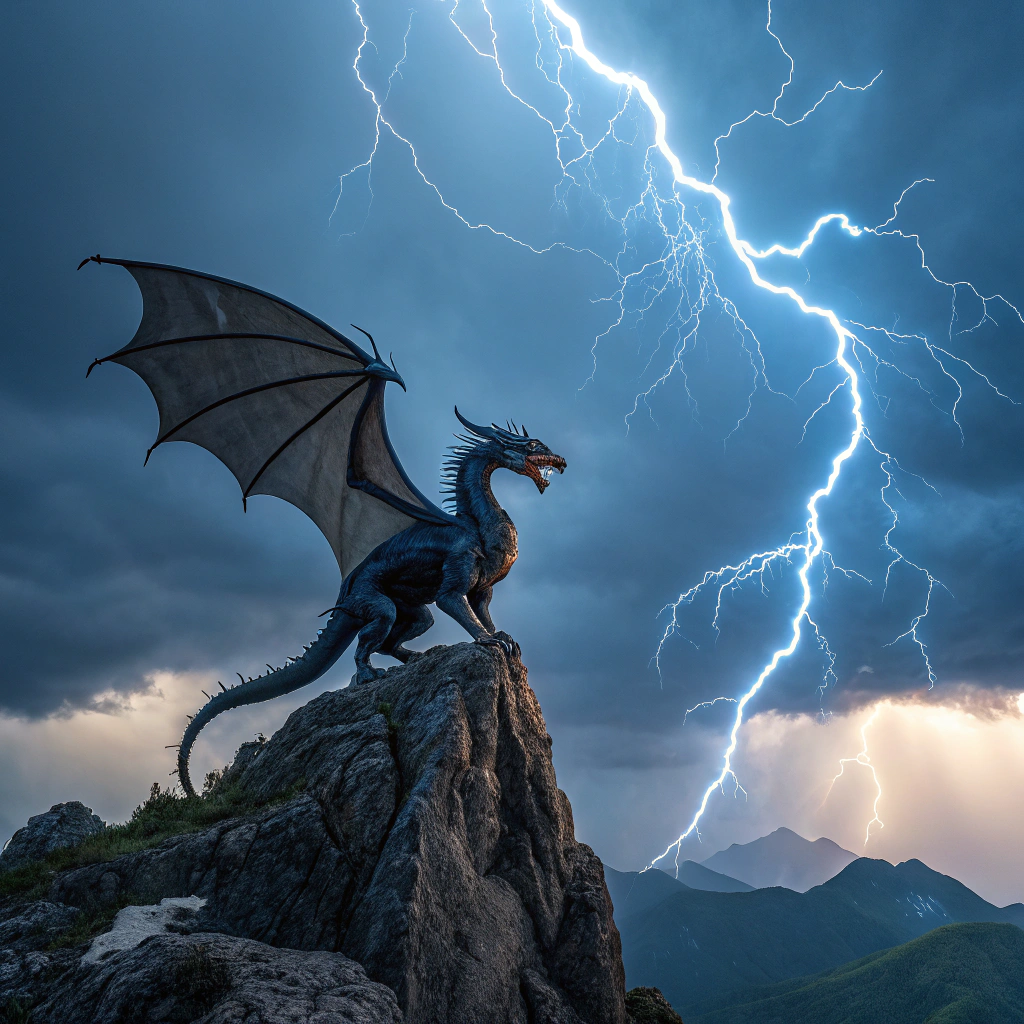
Lightning/Storm Dragon Name Generator
Name: Raijin
Meaning Origin Description Thunder God Japanese Fierce dragon embodying the raw power of thunderstormsName: Indra
Meaning Origin Description God of Lightning Hindu Majestic dragon commanding celestial lightningName: Thorax
Meaning Origin Description Thunder Bearer Norse-inspired Ancient dragon with thunder-rattling roarsName: Fulgora
Meaning Origin Description Lightning Flash Latin Swift dragon leaving trails of electricity in flightName: Tempestus
Meaning Origin Description Storm Lord Latin Massive dragon controlling weather patternsLightning/Storm Dragon Details
| Habitat | Storm-wracked skies and thunder peaks |
| Breath weapon | Chain lightning |
| Usual alignment | Chaotic Neutral |
The Lightning Storm Dragon (Draconus fulgurtempestate) exhibits remarkable physiological adaptations that enable it to harness and manipulate electromagnetic energy. Their scales possess unique conductive properties, incorporating trace amounts of magnetite and other ferromagnetic materials, allowing them to channel electrical currents across their body surface.
These dragons typically measure 60-80 feet in length, with a wingspan of 90-120 feet. Their bodies feature distinctive ridged spines that act as natural lightning rods, and their horns contain specialized organs capable of detecting atmospheric electrical charges from considerable distances.
Their preferred habitat encompasses high-altitude regions, particularly mountainous areas prone to frequent thunderstorms. They construct their lairs in elevated positions, often incorporating metallic deposits that serve as natural conductors. During severe weather events, these dragons demonstrate increased activity and vigor.
The species displays remarkable intelligence and typically maintains a neutral to chaotic neutral alignment, prioritizing personal freedom and natural order above artificial societal constructs. They tend to be solitary but may form temporary alliances during mating seasons or when defending territory.
Their diet consists primarily of large prey, which they often cook through controlled electrical discharge before consumption. They demonstrate particular fondness for metallic objects and may collect them in their lairs, possibly to enhance their electromagnetic capabilities.
Lightning Storm Dragons possess the ability to generate and project powerful electrical charges, both as a hunting mechanism and defensive measure. Their roar can generate sonic waves that affect local weather patterns, potentially triggering storm conditions in suitable atmospheric circumstances.
Despite their immense power, these dragons generally avoid unnecessary conflict, preferring to observe storms and interact with natural phenomena. They demonstrate particular curiosity toward technological advancements and may study human settlements from afar, especially those utilizing electrical energy.
When threatened, they employ sophisticated tactical approaches, using their weather manipulation abilities to create advantageous conditions and their electrical powers for both offense and defense. Their strategy typically focuses on controlling the battlefield through environmental manipulation rather than direct confrontation.
Young specimens exhibit more erratic behavior and less control over their electrical abilities, often causing unintentional static discharges. Maturity brings greater mastery over their powers and typically a more contemplative disposition.